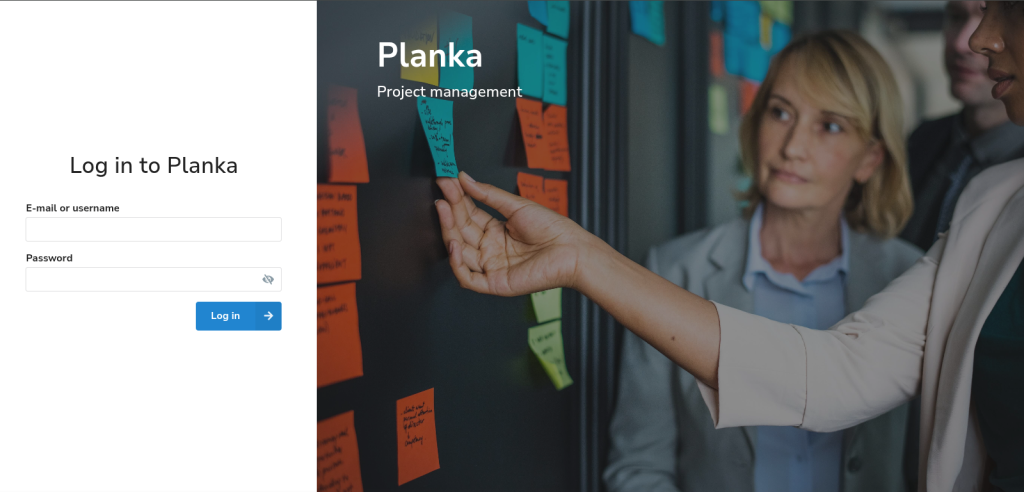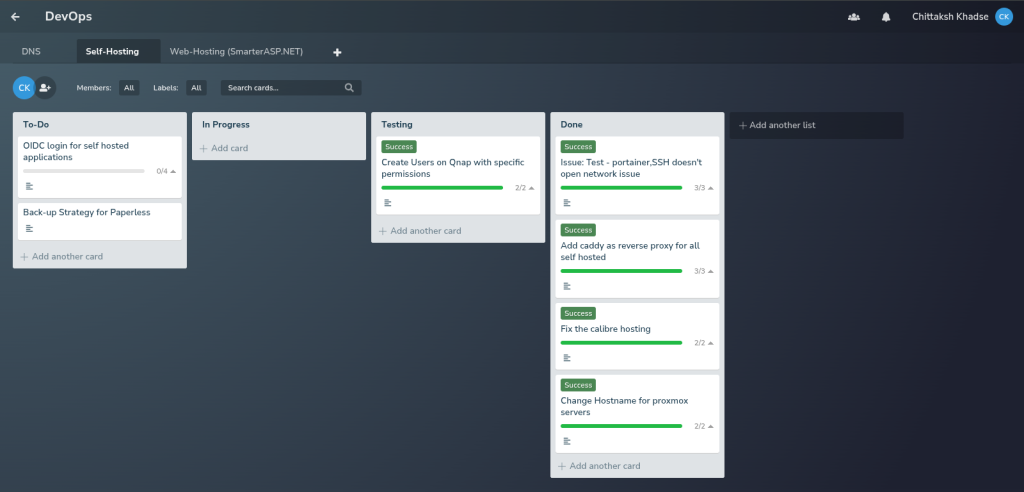Self-Hosting community has multiple options for project management, with Kanban Boards, but some of them are complex to setup, some of them are complex to use, and some of them have paywalls. The only one easy, simple to use, and dynamic enough to handle everything you throw at it is Planka. It’s where I started my journey to manage everything I wanted to do.

You can have multiple users on different boards, assign them tasks, and get updates from an SMTP server when any changes are made to the board. In your preferences, you can subscribe to email for your own changes. That’s it.
Installation
The installation is pretty easy using a docker-compose. You need to start two services: the database engine, i.e. Postgres, and the Planka application image itself. That’s it. We have provided you with a sample docker-compose we have used to test out this application.
name: planka
services:
planka:
image: ghcr.io/plankanban/planka:latest
container_name: planka
restart: on-failure
volumes:
- user_avatars:/app/public/user-avatars
- project_background_images:/app/public/project-background-images
- attachments:/app/private/attachments
environment:
- BASE_URL=https://planka.local.in
- DATABASE_URL=postgresql://postgres@planka-db/planka
- SECRET_KEY=<random hex code as JWT secret>
- TRUST_PROXY=0
- DEFAULT_ADMIN_EMAIL=<email for Super Admin>
- DEFAULT_ADMIN_PASSWORD=<password for Super Admin>
- DEFAULT_ADMIN_NAME=Chittaksh Khadse
- DEFAULT_ADMIN_USERNAME=chittaksh
# SMTP SETTINGS
#- SMTP_HOST=<smtp server host>
#- SMTP_USER=<email from>
#- SMTP_PASSWORD=<email password>
#- SMTP_PORT=25
#- SMTP_SECURE=""
#- SMTP_FROM="Planka Boards"
depends_on:
planka-db:
condition: service_healthy
networks:
plankanet:
default: # runs on port 1337
planka-db:
image: postgres:15-alpine
container_name: planka-db
restart: on-failure
volumes:
- pgdata:/var/lib/postgresql/data
environment:
- POSTGRES_DB=planka
- POSTGRES_HOST_AUTH_METHOD=trust
healthcheck:
test: ["CMD-SHELL", "pg_isready", "-d", "planka"]
interval: 10s
timeout: 5s
retries: 5
deploy:
resources:
limits:
#cpus: '0.50'
memory: 512M
reservations:
cpus: '0.25'
memory: 20M
networks:
plankanet:
volumes:
user_avatars:
name: planka_user_avatars
project_background_images:
name: planka_project_background_images
attachments:
name: planka_attachments
pgdata:
name: planka_pgdata
networks:
plankanet:
name: plankanet
default: {}
There are multiple other ways to install Planka. You can find more about them on the official site. For the installation process, you can follow any one of the processes you are comfortable with.
Usage
Using Planka is the easiest part and is simple, initiative design choices make it easy to use for anyone. You get a simple, create project button, you add the name and description, and that’s it. You can create as many boards as required under that project. After that each board can have different stages/columns to represt the current status of the task.

You can also manage board access based on users. Labels can help you decide and tag tasks according to the various categories. You also get an option to filter tasks based on users or labels or just search tasks in general.

Though the web interface feels great to use, we can’t say the same about the mobile apps. The mobile apps are not completely developed and are still in development. Planka in general is a great option if you just want to use the web interface, but it’s still in development and the development is kinda slow, considering the updates for the last year.
Pros
Easy to set up.
A project can have multiple boards.
Clean and user Friendly UI.
Cons
Doesn’t have reminders.
Doesn’t have repeat options for tasks.
No option to save task relations.
App support is not great on phones.
Conclusion
Planka is one of the most dynamic, easy-to-use project management applications that you easily set up for yourself and your team to manage daily tasks. The UI makes it easy to use and view projects, and tasks in each project, and make changes to boards.
